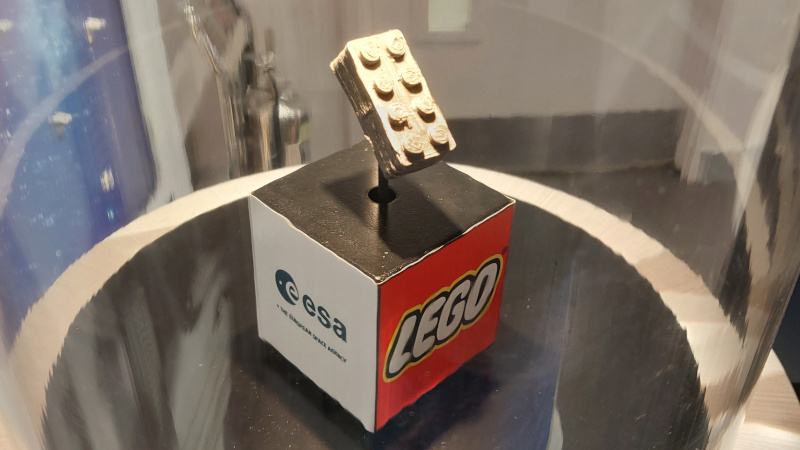Now the eyes of space explorers are turned once more towards the Moon, there are a whole host of new engineering challenges facing engineers working on lunar missions. One such challenge relates to how any proposed Moon base might be built, and as European Space Agency (ESA) researchers turn their mind to the problem they’ve taken a uniquely European approach. They’ve made some LEGO bricks.
Sadly lunar regolith is in short supply in Europe at the moment, so as a stand-in they’ve ground up a meteorite, mixed the powder with a polymer, and 3D printed their bricks. The LEGO write-up is a little long on frothy writing style and a little short on the science, but it seems that they clutch in exactly the same way as the official bricks from Billund, and can be assembled just as you would a normal set of bricks.
It’s with some regret that we have to concede that Europe’s off-planet outpost won’t be crewed by LEGO people in a base made from LEGO bricks, but we applaud them for doing this as a practical test given the limited supply of starter material. LEGO themselves have snagged some of them to display in a range of their flagship stores, so we hot-footed it down to London to catch some pictures. What we found is a single brick in a glass case, sadly looking very like any other 3D printed brick in a shiny grey medium. It’s probably the most expensive brick in the world though, so we doubt they’ll be available to buy any time soon.
If you’re hungry for more of all things LEGO, we can do no better than suggest a trip to the mother lode, in Billund, Denmark.















Looks rather like the LEGO Group admitting that you CAN 3d print legos. Not only that, but from the closeup image in the linked article it’s clearly an fdm print (with the layer lines and individual lines visible), rather like the printers that everybody has.
Doesn’t mean they will connect as well or last as long as actual Lego.
just print a new one lol
Yeh, imagine you’ve completed a large habitat on the moon and it’s been pressurized. Later on you have to replace the second brick from the bottom but you can’t simply flip the model to get at it the “easy” way
Prototype bricks are 3d-printed internally at LEGO. The original patent has expired. Knockoffs are still inferior however. I don’t think anyone is trying to mislead you :)
Anyone claiming all other bricks are inferior is trying to mislead you. While there are worse ones, others are easily competitive and beat Lego in various ways.
AIUI, LEGO is injection molded at 10s of thousands PSI, to thousandth inch dimensional accuracy. I doubt my Prusa approaches either of those criteria.
Parts can absolutely be 3D printed, but as you suggest, its no match for high pressure precision injection molding. The 3D printed parts will clutch, but after having been removed/restuck 100 times, they lose they rigidity. 3D printing is used internally at the LEGO Group for prototype parts.
LEGO seems to be OK with it:
“LEGO themselves have snagged some of them to display in a range of their flagship stores, so we hot-footed it down to London to catch some pictures.”
The joke’s trajectory does not intersect with yours apparently
I mean, LEGO has a page and a video about the regolith bricks. They are not only aware of it, they are promoting it.
https://www.lego.com/en-us/space/article/lego-space-bricks-moon
You know the basic 2×4 brick has been public domain for a while now, right?
Or are you referring to the Lego trademarked name?
At least use Duplo bricks. Those gloves astronauts have to wear are unforgiving.
Yeah, if the goal is actually *doing* stuff and not just playing with legos, bigger bricks makes more sense: easier to work with, fewer joins, and more space for minute variance to even out per element.
In regards to the supply of regolith, students at UTEP’s W.M. Keck Center for 3D Innovation have created a very successful equivalent and have been researching print methods with it for some time. I got to see some of it during a specialized tour last year. They are doing some insanely advanced additive manufacturing there.